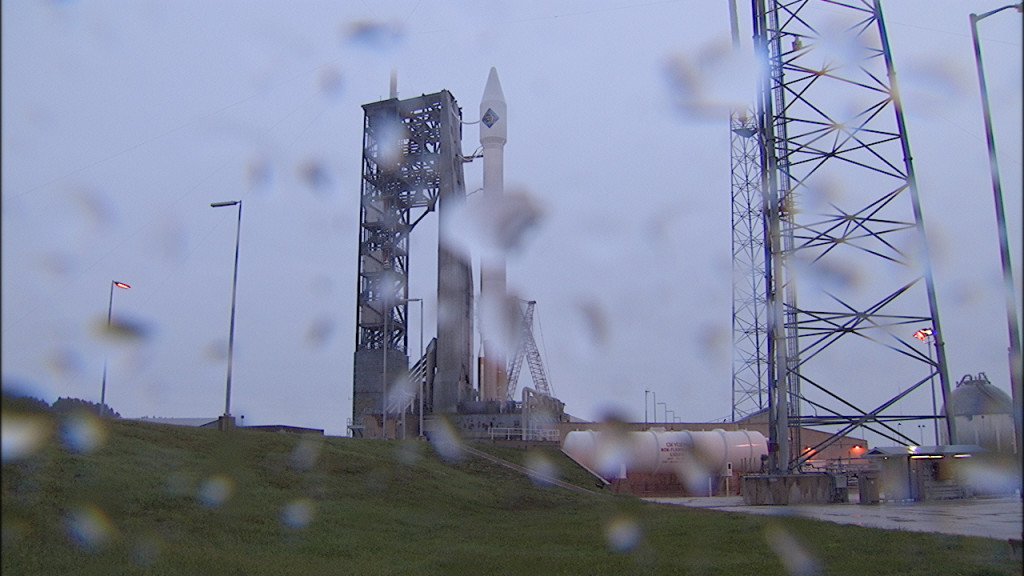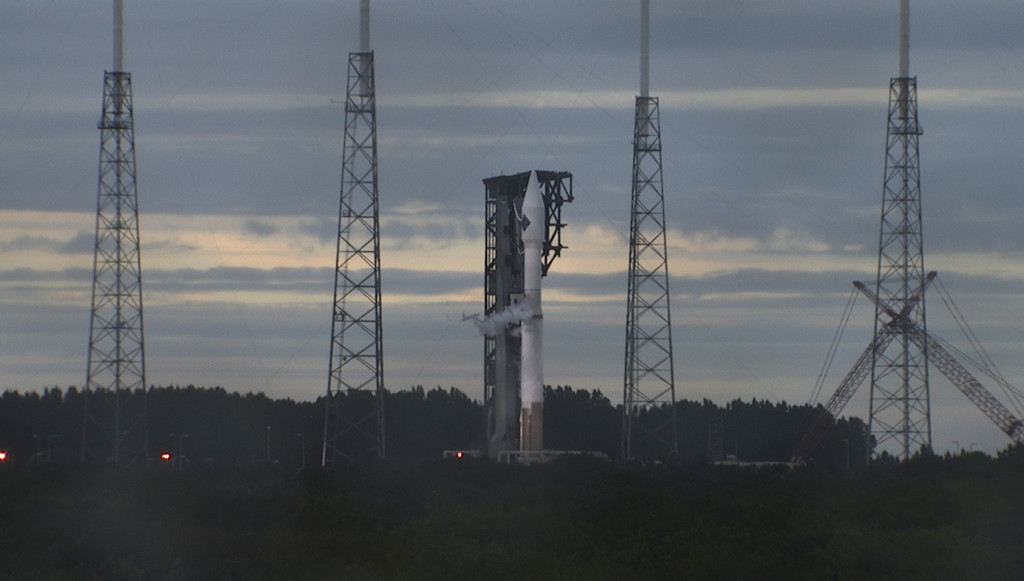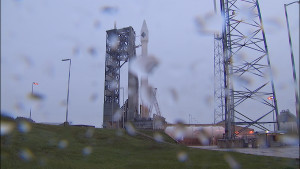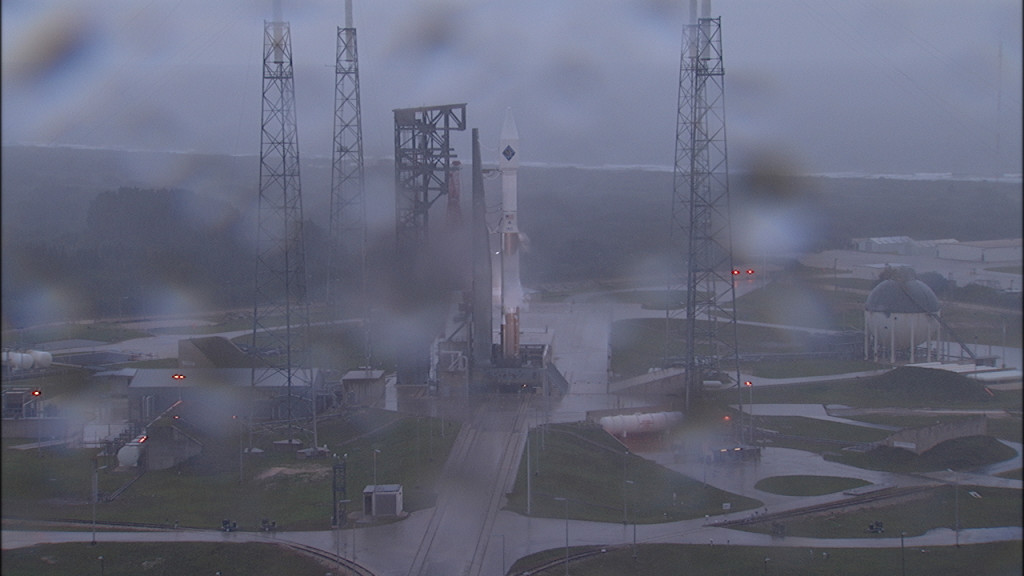 With no signs poor weather conditions would clear in time for a launch today, the launch managers scrubbed today’s try. The United Launch Alliance Atlas V rocket and Orbital ATK Cygnus spacecraft will be configured to launch tomorrow at 5:33 p.m. EST, the opening of a 30-minute window. The forecast tomorrow calls for a 30 percent chance of acceptable conditions at launch time. Continuous countdown coverage here and on NASA TV will begin at 4:30 p.m. EST.
With no signs poor weather conditions would clear in time for a launch today, the launch managers scrubbed today’s try. The United Launch Alliance Atlas V rocket and Orbital ATK Cygnus spacecraft will be configured to launch tomorrow at 5:33 p.m. EST, the opening of a 30-minute window. The forecast tomorrow calls for a 30 percent chance of acceptable conditions at launch time. Continuous countdown coverage here and on NASA TV will begin at 4:30 p.m. EST.
Category: Cygnus
Launch Team Aims for End of Window: 6:25 p.m. EST
The launch teams are now working toward a liftoff at 6:25:45 p.m. EST, the end of today’s launch window for the Atlas V rocket and its Cygnus payload.
New Launch Target Time: 6:10 P.M. EST
The launch team is aiming toward 6:10:45 p.m. EST for this mission to get under way. Weather remains the only concern. No-go conditions are the thick cloud rule and disturbed weather in the area.
New Launch Time Target: 6:03 p.m. EST
Forecast Remains 10 Percent ‘Go’
 The chances of rain clearing out of the Cape Canaveral area before today’s launch window closes are not encouraging, Clay Finn, launch weather officer of the Air Force’s 45th Weather Squadron, told the launch team during a briefing that just concluded. The Atlas booster stage and Centaur upper stage are fully fueled. The countdown is proceeding towards a 5:55 p.m. EST liftoff and the launch window runs until 6:25 p.m.
The chances of rain clearing out of the Cape Canaveral area before today’s launch window closes are not encouraging, Clay Finn, launch weather officer of the Air Force’s 45th Weather Squadron, told the launch team during a briefing that just concluded. The Atlas booster stage and Centaur upper stage are fully fueled. The countdown is proceeding towards a 5:55 p.m. EST liftoff and the launch window runs until 6:25 p.m.
Topping Mode
The cryogenic propellant loading for the Atlas V is complete, with the liquid oxygen tank of the first stage loaded and the Centaur upper stage’s liquid oxygen and hydrogen tanks in topping off mode.
Forecast: 10 Percent ‘Go’
Cygnus Named for Astronaut Deke Slayton

 Orbital ATK’s enhanced Cygnus spacecraft carries the name S.S. Deke Slayton II as a tribute to the Mercury astronaut who became a pioneer of commercial spaceflight endeavors after retiring from NASA. Slayton, a decorated Air Force test pilot before being chosen as one of the original astronauts, flew on the Apollo-Soyuz Test Project in 1975.
Orbital ATK’s enhanced Cygnus spacecraft carries the name S.S. Deke Slayton II as a tribute to the Mercury astronaut who became a pioneer of commercial spaceflight endeavors after retiring from NASA. Slayton, a decorated Air Force test pilot before being chosen as one of the original astronauts, flew on the Apollo-Soyuz Test Project in 1975.
Countdown and Launch Timeline
 Here’s a look at today’s countdown events leading up to an on-time liftoff at 5:55:45 p.m. EST.
Here’s a look at today’s countdown events leading up to an on-time liftoff at 5:55:45 p.m. EST.
EST Event
4:45 p.m. Start flight open loop Flight Termination System test
5:09 p.m. Initiate fuel fill sequence
5:21 p.m. Begin 30 minute hold at T-4 Minutes
5:25 p.m. Weather Briefing
5:48 p.m. Status check to continue countdown
5:51:45 p.m. T-4 Minutes and counting
5:55:42 p.m. RD-180 engine ignition
5:55:45 p.m. Launch
5:56:03 p.m. Begin pitch/yaw/roll maneuver
5:57:07 p.m. Mach 1
5:57:18 p.m. Maximum Dynamic Pressure
6:00:00 p.m. Atlas booster engine cutoff (BECO)
6:00:06 p.m. Atlas booster/Centaur separation
6:00:16 p.m. Centaur first main engine start (MES1)
6:00:24 p.m. Payload Fairing jettison
6:14:01 p.m. Centaur first main engine cutoff (MECO1)
6:16:50 p.m. Cygnus spacecraft separation
~7 p.m. Cygnus solar array deploy
~8 p.m. Post-Launch News Conference on NASA Television
‘No-go’ Conditions Right Now
Current weather conditions violate rules for thick clouds and disturbed weather at Space Launch Complex 41. Forecasters expect both conditions to remain red for the next hour. Today’s launch window will be open for 30 minutes beginning at 5:55 p.m. Fueling procedures are continuing normally for the United Launch Alliance Atlas V booster that will carry Orbital ATK’s enhanced Cygnus spacecraft into orbit.



